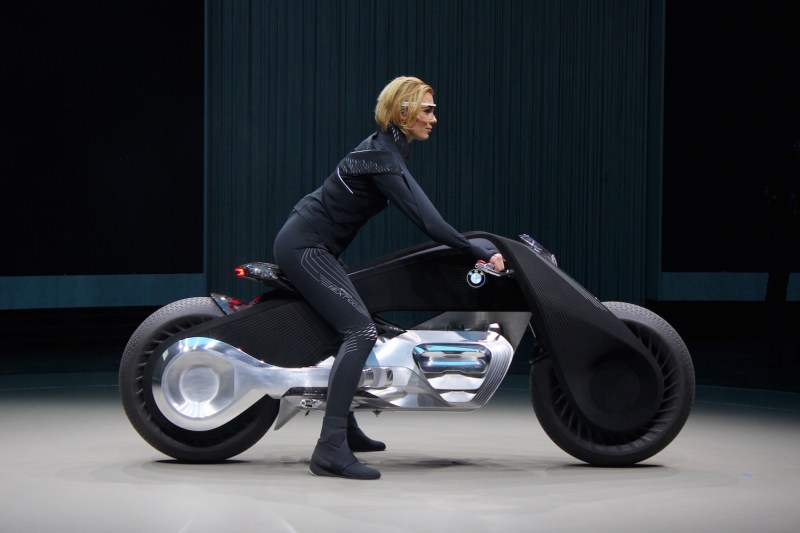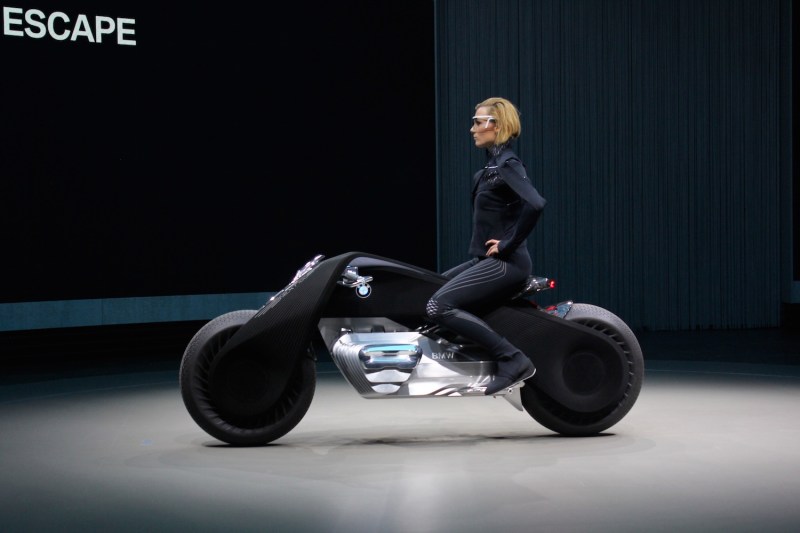Every automaker is looking ahead. Consumer trends, manufacturing practices, vehicle technologies, regulations – these factors will define the success or failure of a company’s operations in the years to come. Brands that take the traditional sales model or the interaction between man and machine for granted, will stumble, and they may never recover.
The rate of tech advancement is tremendous, but regulatory support is painfully lethargic. To be fair, there are some weighty issues to govern. How will autonomy interact with human unpredictability? If artificial intelligence can handle every element of vehicle manufacturing and maintenance, what happens to thousands of engineers, mechanics, and assembly workers?
With so many variables, how far ahead must an automaker set its sights: five years, ten, twenty? It’s not an easy question to answer, but BMW isn’t taking any chances. In celebration of its 100th anniversary, and as part of its Iconic Impulses Tour, the German luxury marque has revealed a (far) forward-thinking concept for each of its brands: BMW, Mini, Rolls-Royce, and BMW Motorrad. Each Vision Next 100 model incorporates a distinct picture of future mobility and represents BMW’s dedication to the cutting edge.
During BMW Motorrad’s unveiling of its two-wheeled prophesy, The Manual caught up with BMW Group CEO Harald Krueger for a glimpse into the company’s cryptically named “Strategy Number One.”
Autonomous Innovation

Autonomous vehicle technology is among the hottest innovation topics du jour, and there’s a broad spectrum of automaker responses to this science. Ford, for example, recently went on record to say self-driving technology can only exist in consumer or fleet vehicles without a human override. In tech speak, Ford is describing SAE Level 4 and 5 functionality. Levels 1 and 2 are more commonly known as driver assistance technologies (lane keeping assist, adaptive cruise control, etc.).
BMW, by contrast, has its sights set on SAE Level 3 adoption. Its future models will be equipped with fully autonomous capabilities, but a human can regain control if desired. According to Ford and other industry leaders, this strategy introduces too many legal and moral dilemmas related to operator responsibility.
When asked why BMW is targeting this category of man/machine interaction, Krueger had this to say: “The relationship between car and driver in the premium business is different. If you just would like to transport people from A to B safely – if safety is your only concern – that is fine, but that is not our goal…we are in the business of passion and emotion, and that’s why we build the ultimate driving machine.”
Krueger’s statement introduces the concept of premium versus practical autonomy to match our current state of luxury versus mainstream consumption. During the Motorrad Vision Next 100 introduction, BMW Motorrad Design boss, Edgar Heinrich, took the line of reasoning a step further. “Mechanics will be a luxury in the future; not everyone will be able to interact with machines.”
It’s a logical progression. When autonomy is the norm, control will become a treat. Consider pre-automotive transportation: when horses were the best way to get around, riding them wasn’t a luxury. Today, it is.
Owned or shared?

Where Ford and BMW’s strategies do overlap is in their approach to future sales. Both automakers have acknowledged that the traditional ownership model will change. Already, ride sharing/hailing services like Uber and Lyft can fill the need for transportation in densely populated areas, and that trend will only continue. In addition, when people become passengers in their own vehicles thanks to autonomous systems, little will separate the experience from a hailed ride in a stranger’s car.
Related:
BMW’s ReachNow service will become a larger contributor to the automaker’s bottom line. At present, the urban car sharing service composed entirely of BMW and Mini models is for those who still wish to drive or need the flexibility of a car on hand. Eventually, though, ReachNow could become a network of autonomous vehicles for those who want premium transportation. It will also, according to Krueger, spread to “rural areas, where families still need cars.”
Apart from its own car sharing service, Krueger said the shift in vehicle usage gives BMW an opportunity to capitalize on fleet sales. “We can be a company who offers and manages fleets for others. Uber and the others do not manage their own fleets.” The BMW i-Series models are of particular advantage to BMW. A ready-made electric vehicle, with 120+ miles of range, is very attractive to ride sharing services. Krueger also noted that vehicles in fleets are used more frequently than privately owned cars, significantly cutting their life spans, and therefore allowing BMW to move more
BMW still expects the wealthy will own their vehicles – their private luxury havens – but the vast majority of consumers will lease cars seasonally, loan their own
Alternative energy

If autonomy and sharing are presumed traits of tomorrow’s automotive world, alternative energy powertrains are a definite. The adoption curve is still forming, but BMW expects the transition from internal combustion will accelerate, and its Mini models will lead the charge. In 2019, the Mini-E will preview urban mobility in compact, customizable, zero emissions vehicles.
BMW is confident that charging infrastructure will meet the developing need from electric vehicles. In Germany, for example, the government is investing 300 million euros in these stations, and Krueger expects other countries will commit before long. “Electrification isn’t just driven by customer demand; the main driver is often the regulator.” For broad adoption, Krueger believes charging must be available at home, at work, and in major centers like shopping malls. It will be up to governments to go beyond tax incentives; they will need to remove the barriers to zero emission lifestyles.
Krueger also acknowledges that while BMW is focused on battery-electric systems today, tomorrow may be dominated by hydrogen fuel cell technology. “We are working with Toyota on fuel cell technology, and we expect Tokyo [Motor Show] 2020 will be a big statement for hydrogen powertrains.” Whichever alternative energy solution succeeds, it’s clear that BMW’s will be among the first and most ardent adopters.
The business of mobility

The automotive industry is dying. Well, in name at least. What we today refer to as automotive manufacturers will be reborn tomorrow as mobility companies. A certain amount of the “mobility” banner is marketing, but its inherently broad interpretations leave room for several of the business channels I’ve outlined in this article.
Little of what BMW’s executives emphasized during the Motorrad Vision Next 100 presentation or subsequent interviews sounds like traditional automotive enterprise. Vehicle production will still be central to the German marque’s operations, but it will soon fit within a larger goal of facilitating mass transportation.
BMW is preparing for whichever mobility component is most profitable and lasting. The iNEXT, for example, will introduce new interior technology, construction methods, and vehicle communication systems in 2021. These innovations will certainly be used to improve BMW models, but they may also be licensed to other brands that are slower to advance.
“We must consider the digitalization of manufacturing, charging, parking – it’s the whole equation,” said Krueger. Presently, automakers wage advertising wars to sell cars, but mobility companies will compete in a covert technology race. Victors will bring scalable transportation solutions to market, defining infrastructure investments and earning contracts with other mobility ventures.
What’s this mean for consumers? Plenty of good news. Transportation innovations will provide mobility for all, not just those fortunate enough to own cars; vehicle-to-vehicle communication and autonomous tech will improve traffic flow and reduce accidents; emission-free vehicles will benefit the environment.
Regrettably, these developments will come at a price. Mobility will be cheap, but driving will be expensive. It won’t happen overnight, but premium brands will become the only merchants of control. Enthusiasts have one hope: that BMW and its fellow performance luxury companies will remember their analog roots in a digitized future.











